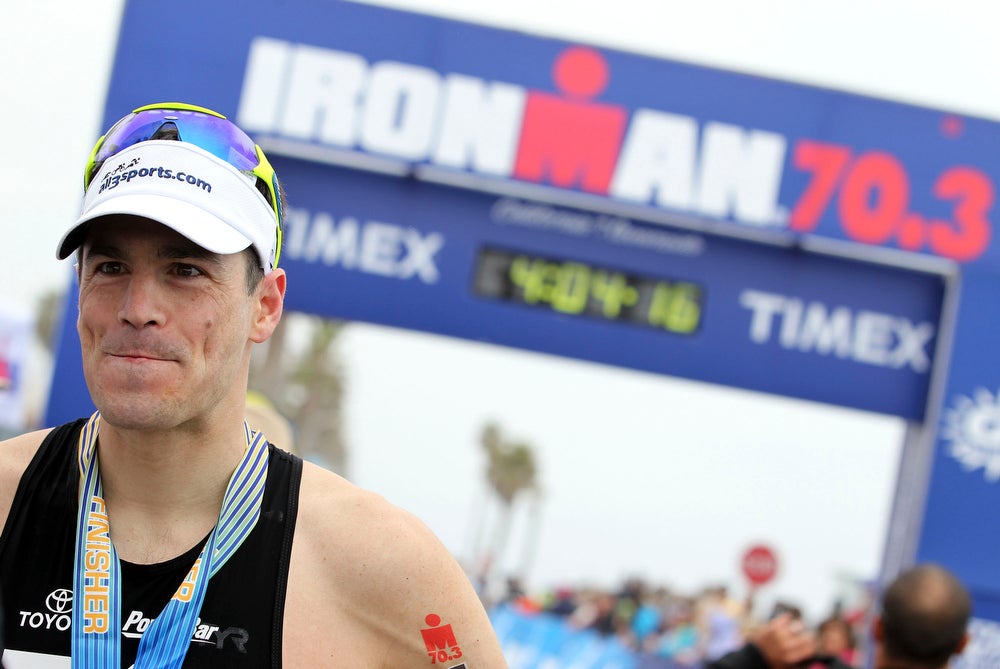Andy Potts' Five Rules Of Recovery

Photo: Jeff Bottari
Sleep … A Lot Of It
I get an average of 11 hours of sleep a night. I know that sounds like a ton, and not many people can pull that off, so try to shoot for eight hours at the least. My wife and I used to joke at the end of a hard training or racing day that I was going to bed for the night in the “regenerator.” We attributed special recovery powers to our bed, and when morning rolled around I would be recharged for the demands of a new day.
My top sleeping tip: Sleep with a pillow between your legs. It keeps my body relaxed during the night because I put less pressure on my hips, back and legs.
Balanced Nutrition
When it comes to what I put in my body, I’m not very picky. I use food as fuel. With that in mind, my wife (who doubles as my nutritionist) does a fantastic job of making sure our meals are colorful and extremely nutritious. Even though I use a few nutrition products to help me recover faster, I firmly believe that a balanced diet trumps any dietary supplement. I listen to my cravings, including cheeseburgers, chocolate, ice cream, nuts and chips, but try not to overindulge in the temptations.
With a great nutritionist and chef I still need some help with the holes in my diet. I use a few supplements with which I have had personal experience and success. I use PowerBar’s Ironman Restore drink (gets the right nutrients into my body quickly post-workout), Zone’s OmegaRx (reduces inflammation) and First Endurance’s MultiV (keeps me healthy).
Fresh Running Shoes
When my Asics running shoes start to break down, I get a new pair to avoid shin splints—or something worse, like a stress fracture. The best way to test your shoes is to look at the mid-sole (cushion area near your heel) for deep creases. When you buy your shoes, there are no creases, but as they start to break down, the mid-soles develop lines from the pounding that become deeper. An old pair of shoes can drag out your recovery because you feel so much more of the road or trail when you don’t have the right cushioning.
Compression Gear
Another small but crucial part of my recovery is using compression running socks and CEP’s new custom-shaped tights called Clone. I wear the compression socks when I’m doing a long ride or a long run for training, but I really like the benefits of wearing the socks post-workout for recovery. I noticed the benefits immediately. Now with Clone tights I have all the same benefits, but it extends past my knees and all the way up to my hips.
Real Rest
Rest is not the same as sleep. Real rest takes place when you are not consumed by the exertions of work or the physical toll of training. Sometimes rest is hard to come by, but it’s necessary to reach your full potential.
A few years ago, I started taking Sundays off from training. It has been the best thing for my body and probably more importantly, my mind. When the end of the week approaches and I am worn out from training, I focus on Sunday. My body certainly needs the break, but my mind appreciates it even more.
See also: